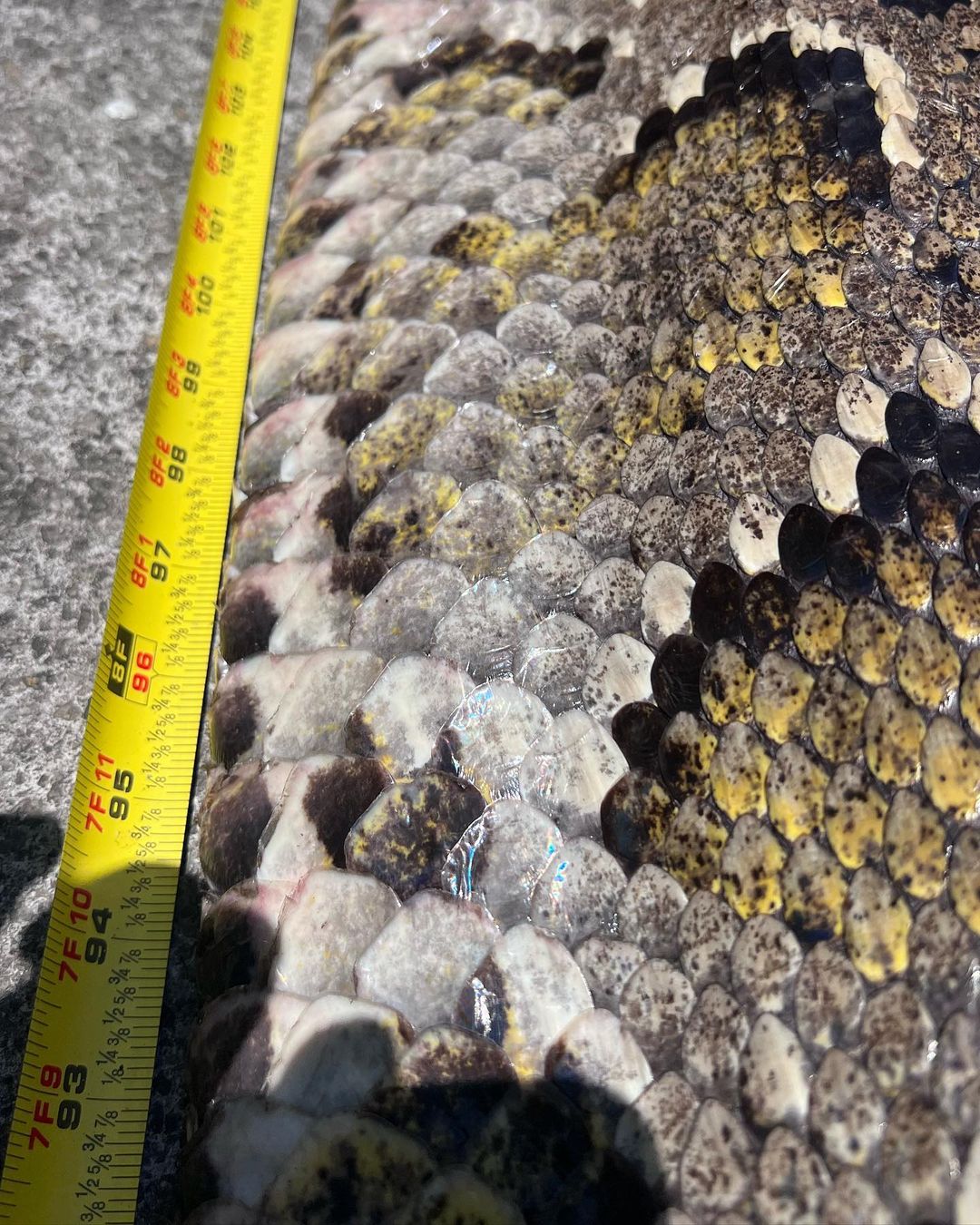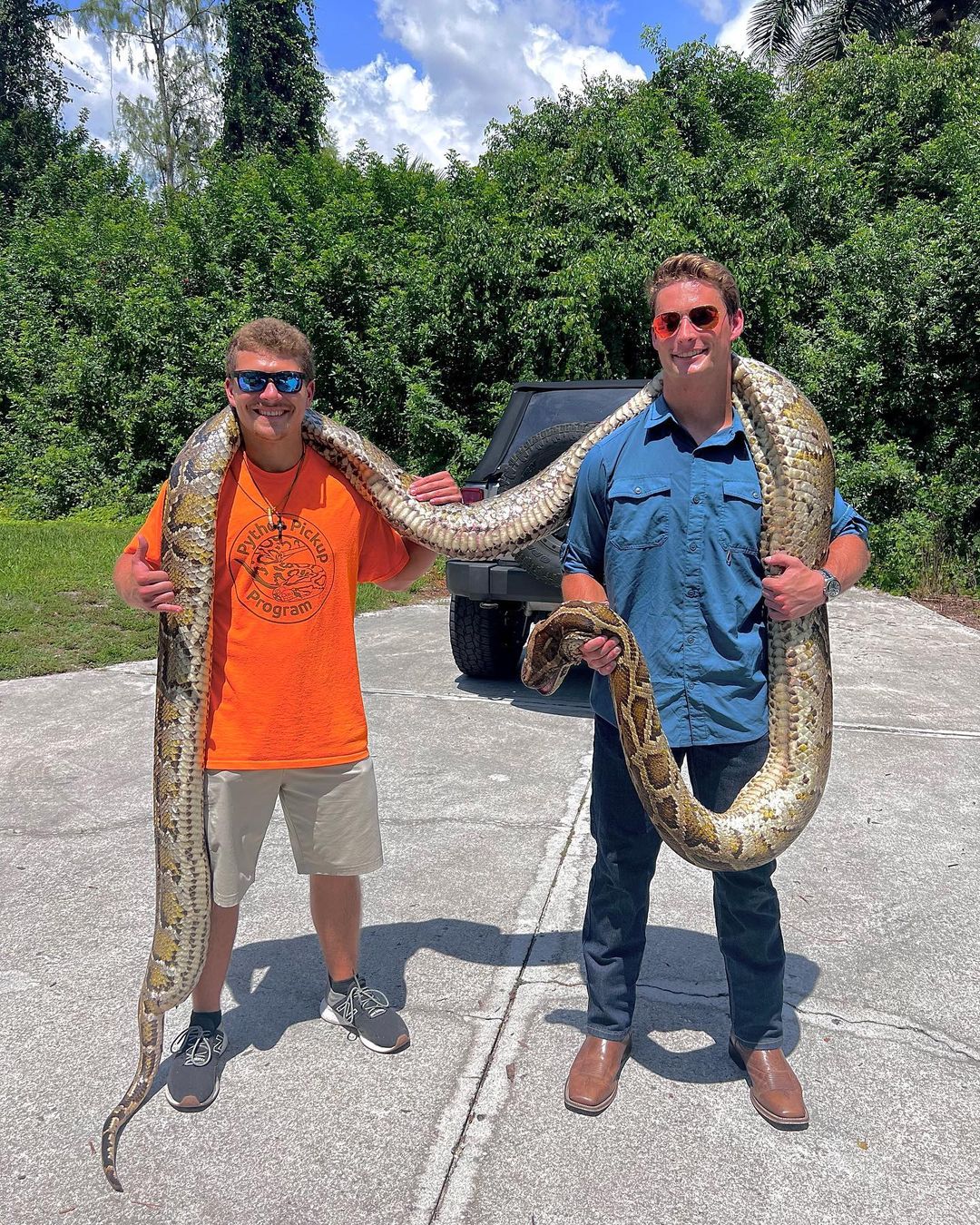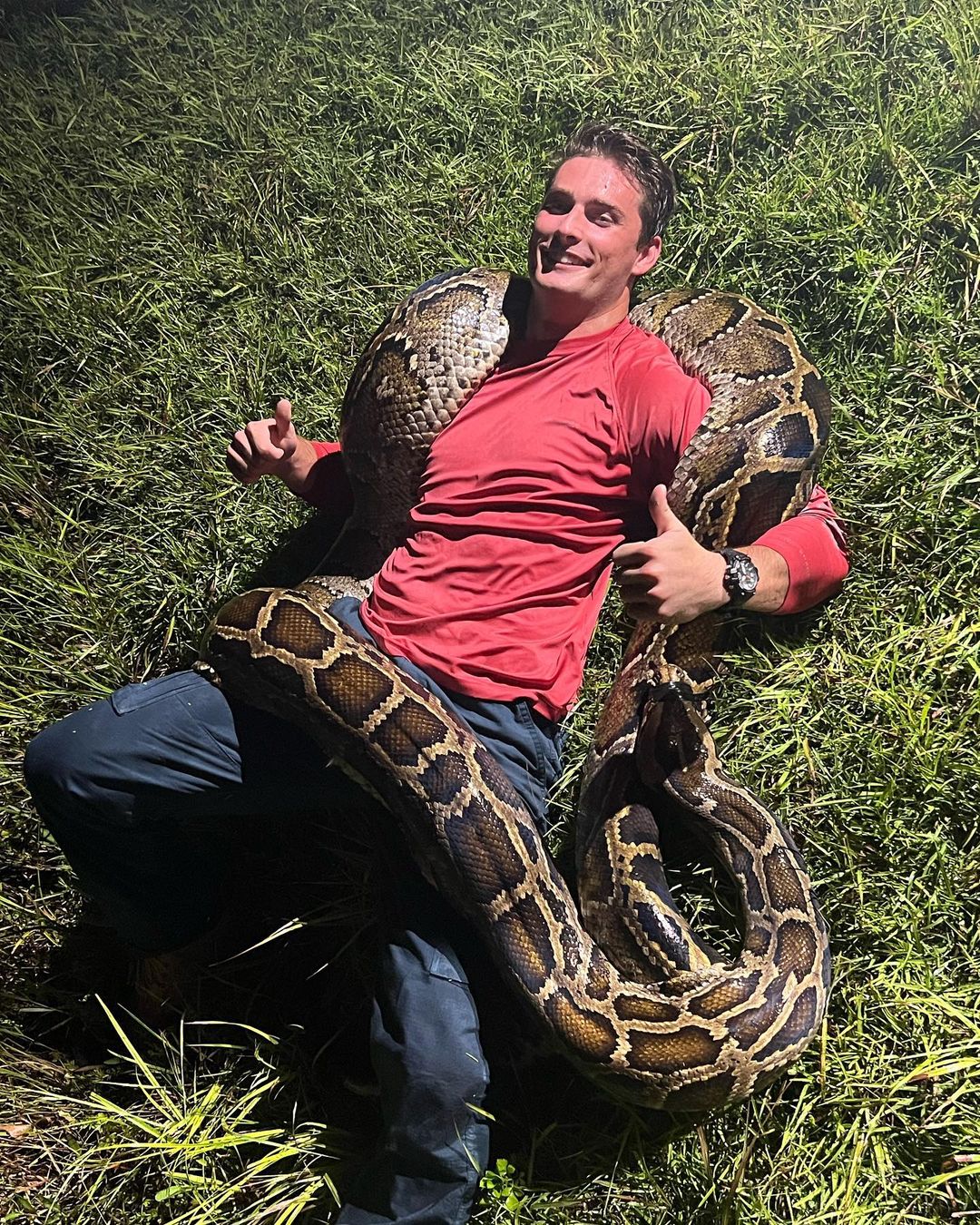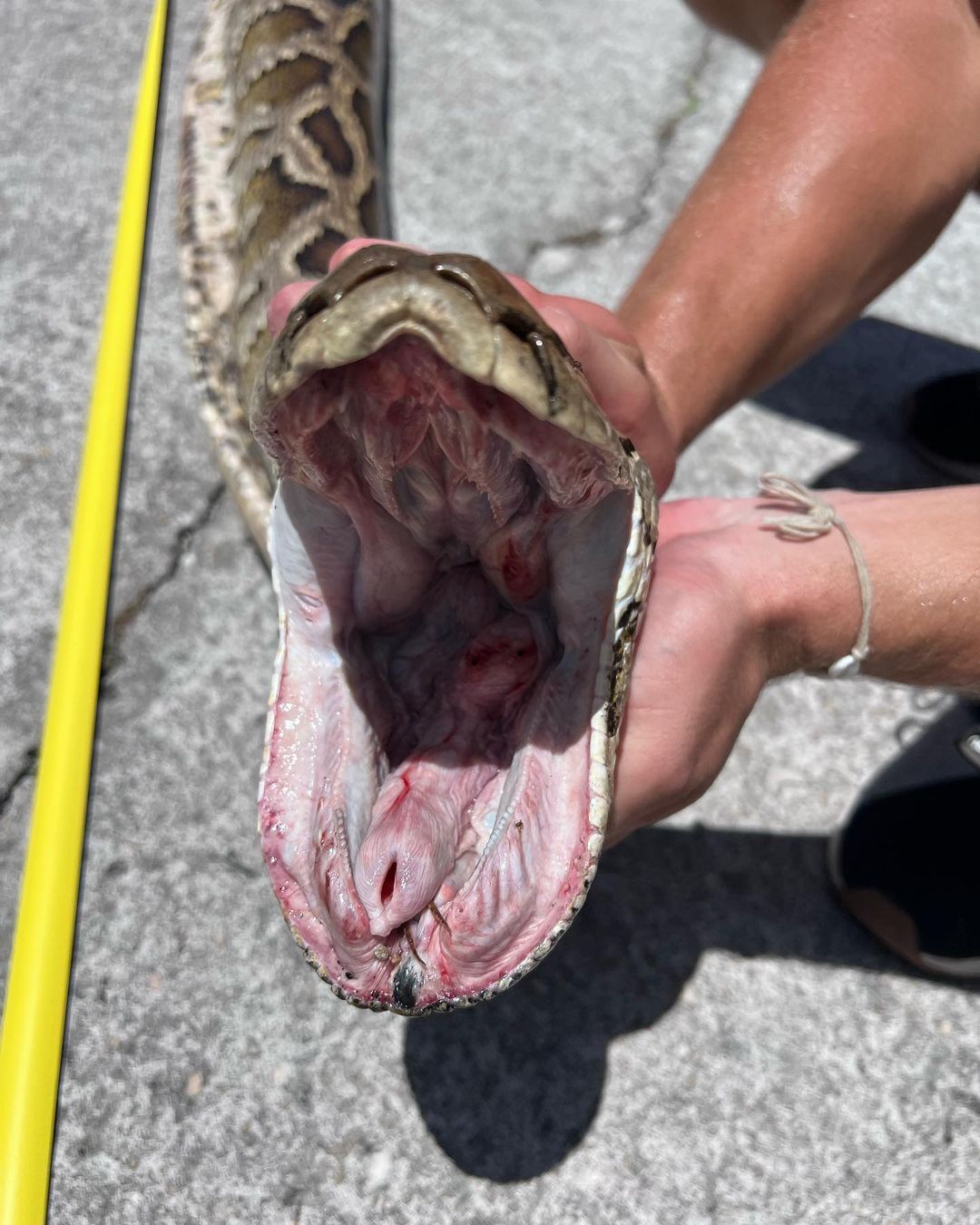A group of python hunters in Florida this week captured the longest female Burmese python caught in the state, according to the Conservancy of Southwest Florida.
The invasive snake, measuring 19 feet long and weighing 125 pounds, was spotted in Big Cypress National Preserve in the early hours of July 10 by 22-year-old Jake Waleri, who was out hunting with Glades Boys Python Adventures. The hunters brought it to the Conservancy for documentation.
Photos shared by Glades Boys Python Adventures show the massive snake.
“Its awesome to be able to make an impact on South Floridas environment. We love this ecosystem and try to preserve it as much as possible,” Waleri, from Naples, said in a statement.
The Naples-based Conservancy of Southwest Florida established an invasive python removal program in 2013. The program targets female pythons to help stop their proliferation in the Everglades and surrounding habitats, where they feed on native wildlife and outcompete native predators.
“We had a feeling that these snakes get this big and now we have clear evidence,” said Conservancy Biologist Ian Easterling. “Her genetic material may prove valuable for an eventual understanding of the founding population of South Florida. We will be collecting measurements and samples that will be distributed to our research collaborators.”
The heaviest python removed through the program was captured in June of last year, measuring nearly 18 feet long and weighing in at 215 pounds. That python was found to be carrying a record 122 developing eggs, increasing what was believed to be the highest number of eggs a female can potentially produce per breeding cycle.
Scientists also found that snake’s last meal was an adult white-tailed deer, the endangered Florida panther’s primary food source.
The pythons gained a foothold in Florida through the pet trade. Python owners often release them after the females, which are far larger than males, become too large to keep. Biologists regularly place trackers on males to help them find the breeding females.
Since 2013, the Conservancy said it has removed more than 30,000 pounds of python from approximately 150 square miles of southwest Florida.








